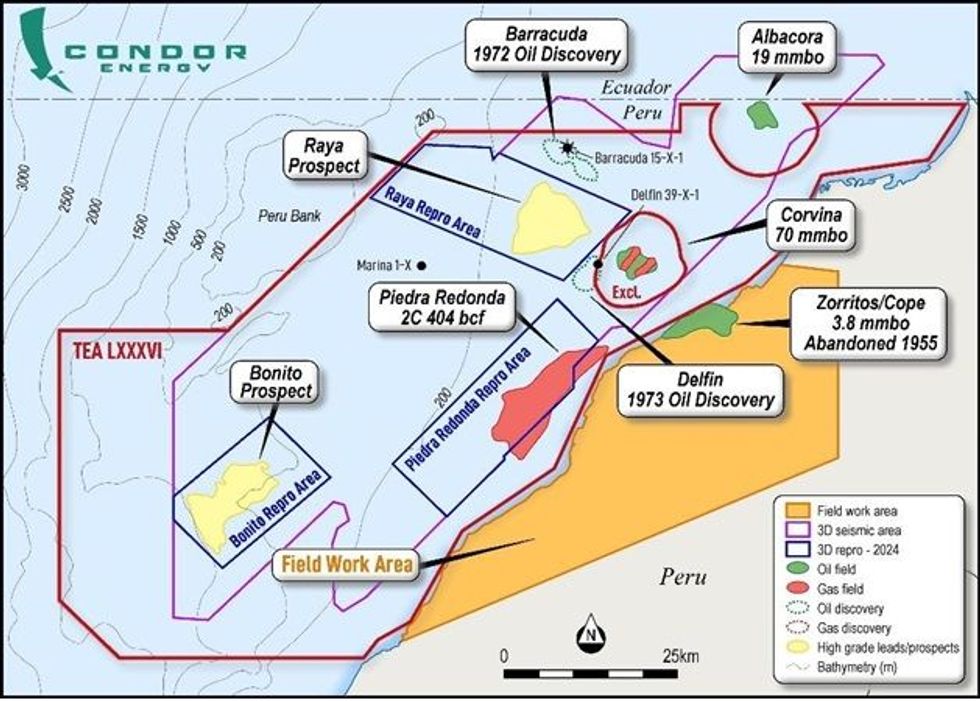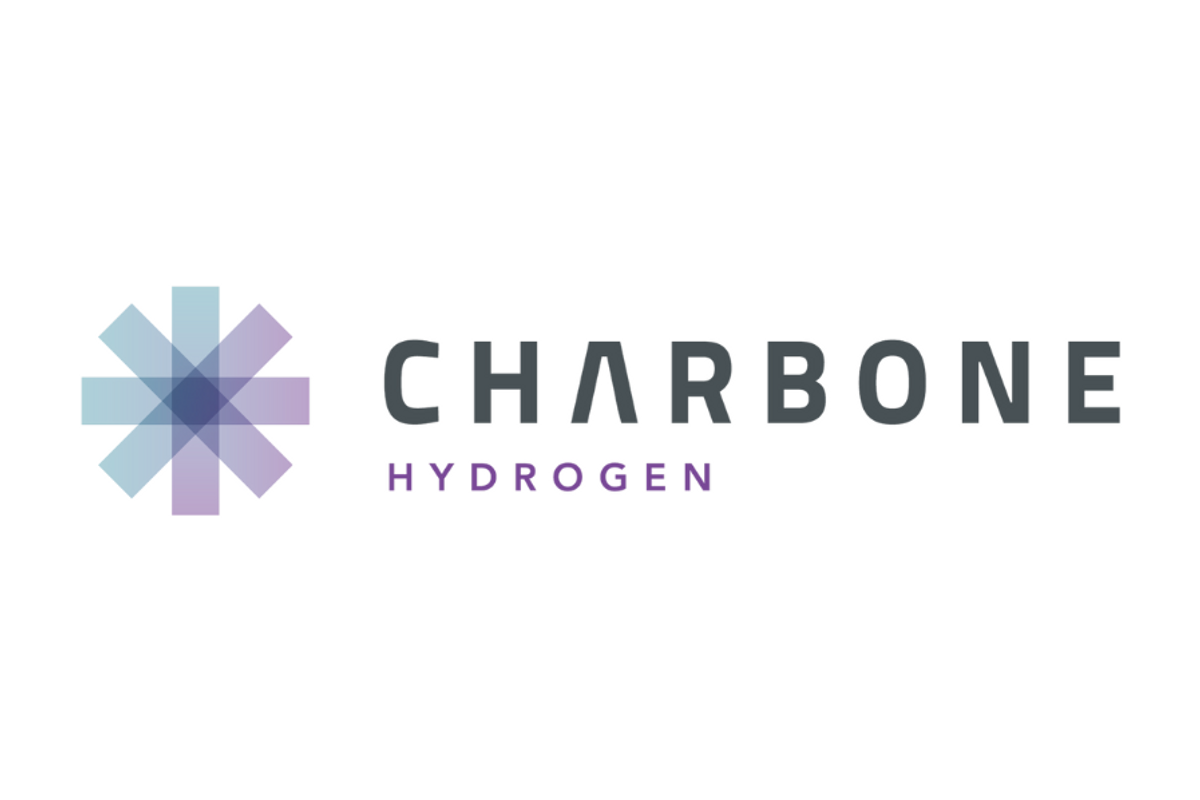
October 28, 2024
Condor Energy Limited (ASX: CND) (Condor or the Company) is pleased to provide the following report on exploration activities for the quarter ending 30 September 2024.
Highlights
- Condor Energy Ltd (ASX: CND) (Condor or the Company) is pleased to advise that Mr Serge Hayon has been appointed as Managing Director of the Company effective from the 1st of October 2024.
- Significant new oil targets identified from fast-track interpretation of the 3,800km2 of legacy 3D seismic data.
- The Salmon Lead exhibits stacked structural traps with potential Direct Hydrocarbon Indicators (DHIs). It Offers several follow-on targets if successful, with a repeated structural configuration.
- Successfully reprocessed 1,000 km2 of legacy 3D seismic data across three leading prospects, providing enhanced insights into prospectivity that will guide our ongoing interpretation and resource estimation efforts.
- New seismic inversion and AVO studies have produced indications of high-quality reservoirs and hydrocarbon fill at the Raya Prospect, significantly upgrading its prospectivity.
Technical Evaluation Agreement (TEA) LXXXVI - Offshore Oil and Gas Block (CND 80% Working Interest)
During the reporting quarter, Condor and US-based joint venture partner Jaguar Exploration Limited (Jaguar), continued the evaluation of the 4,858km2 Technical Evaluation Agreement (TEA or block) offshore Peru in conjunction with the Company’s technical advisors Havoc Services Pty Ltd (Havoc).
Condor’s block comprises over 3,800km2 of existing 3D seismic data from which an aggregate of 1,000km2 have been selected to undergo pre-stack depth migration (PSDM) reprocessing and interpretation across three discrete highly prospective areas (Figure 1). The three areas selected for reprocessing were chosen following the identification of the Raya and Bonito prospects and the Piedra Redonda gas field.

The Raya1 and Bonito2 prospects are large features in the Zorritos Formation, which present structural closure at multiple levels and the potential for stacked pay with multiple Zorritos reservoir-seal pairs present. The Piedra Redonda gas field contains ‘Best Estimate’ Contingent Resources (2C) of 404 Bcf (100% gross)3 which potentially underpins a standalone gas development and additional low-risk upside located updip from the C-18X discovery well with ‘Best Estimate’ Prospective Resources (2U) of 2.2 Tcf# (gross unrisked) of natural gas4.
Click here for the full ASX Release
This article includes content from Condor Energy, licensed for the purpose of publishing on Investing News Australia. This article does not constitute financial product advice. It is your responsibility to perform proper due diligence before acting upon any information provided here. Please refer to our full disclaimer here.
CND:AU
The Conversation (0)
26 September 2024
Condor Energy
Rare world-class hydrocarbon exploration opportunity
Rare world-class hydrocarbon exploration opportunity Keep Reading...
29 January
Quarterly Activities/Appendix 5B Cash Flow Report
Condor Energy (CND:AU) has announced Quarterly Activities/Appendix 5B Cash Flow ReportDownload the PDF here. Keep Reading...
22 January
A$3M Placement to Advance High-Impact Workplan for Peru
Condor Energy (CND:AU) has announced A$3M Placement to Advance High-Impact Workplan for PeruDownload the PDF here. Keep Reading...
20 January
Trading Halt
Condor Energy (CND:AU) has announced Trading HaltDownload the PDF here. Keep Reading...
15 January
Piedra Redonda Gas Field Best Estimate Resource of 1 Tcf
Condor Energy (CND:AU) has announced Piedra Redonda Gas Field Best Estimate Resource of 1 TcfDownload the PDF here. Keep Reading...
13 January
Trading Halt
Condor Energy (CND:AU) has announced Trading HaltDownload the PDF here. Keep Reading...
18 December
Oil and Gas Market Forecast: Top Trends for Oil and Gas in 2026
The oil and gas market was punctuated by volatility in 2025. Oil prices softened as supply outpaced demand and inventories built. Brent and West Texas Intermediate (WTI) crude slipped in late 2025, with Brent dipping below US$60 per barrel and WTI hovering at US$55.Production increases from... Keep Reading...
16 December
CHARBONE confirme l'entree officielle en production commerciale d'hydrogene propre UHP a Sorel-Tracy
(TheNewswire) Brossard, Quebec TheNewswire - le 16 décembre 2025 CORPORATION CHARBONE (TSXV: CH,OTC:CHHYF; OTCQB: CHHYF; FSE: K47) (« CHARBONE » ou la « Société »), un producteur et distributeur nord-américain spécialisé dans l'hydrogène propre Ultra Haute Pureté (« UHP ») et les gaz industriels... Keep Reading...
16 December
CHARBONE Confirms the Official Start of Commercial Production of Clean UHP Hydrogen in Sorel-Tracy
(TheNewswire) Brossard, Quebec TheNewswire - December 16, 2025 CHARBONE CORPORATION (TSXV: CH,OTC:CHHYF; OTCQB: CHHYF; FSE: K47) (" CHARBONE " or the " Company "), a North American producer and distributor specializing in clean Ultra High Purity (" UHP ") hydrogen and strategic industrial gases,... Keep Reading...
15 December
Angkor Resources Signs Letter of Intent to Sell Evesham Oil Production
(TheNewswire) GRANDE PRAIRIE, ALBERTA TheNewswire - December 15, 2025 - Angkor Resources Corp. (TSXV: ANK,OTC:ANKOF) ("ANGKOR" OR "THE COMPANY") is pleased to announce that it has entered into a binding Letter of Intent ("LOI") with an arm's length party (the "Purchaser") to sell its 40%... Keep Reading...
12 December
Syntholene Energy
Syntholene Energy is a Canada-based mineral exploration company. It is focused on the exploration and development of the Iron Lake Project which comprises 21 mineral claims totaling 8,035 hectares. Keep Reading...
10 December
Syntholene Energy Announces Completion of Reverse Takeover
Syntholene Energy Corp. (TSXV: ESAF) (formerly, GK Resources Ltd.) (the "Company" or "Syntholene") is pleased to announce that, further to its news releases dated May 6, 2025, May 16, 2025, July 9, 2025, September 18, 2025, November 18, 2025 and December 3, 2025, it has completed the acquisition... Keep Reading...
Latest News
Interactive Chart
Latest Press Releases
Related News
TOP STOCKS
American Battery4.030.24
Aion Therapeutic0.10-0.01
Cybin Corp2.140.00





